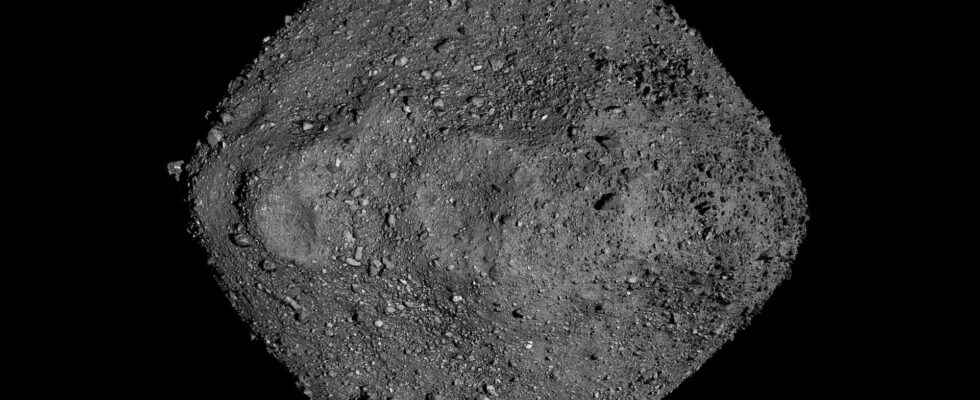During their contact with the asteroid Bennu, several teams of researchers studied the forces exerted on NASA’s Osiris-Rex probe in order to characterize the structure of the asteroid up to 10 centimeters below its surface. The results, published in two different studies, show that the layer just below the surface of the asteroid would be composed of loosely bound and very porous rock fragments.
You will also be interested
[EN VIDÉO] Osiris-Rex encounter – Bennu: the countdown is on NASA’s Osiris-Rex probe left Earth in September 2016. Its goal: to collect rock samples from the surface of the asteroid Bennu and bring them back to Earth. The Touch-And-Go.
In 2016, the Nasa launched his mission Osiris-Rex in the direction ofasteroid (101955) Bennu with the main objective of taking a sample of its soil there and returning it to Earth. Indeed, the asteroid intrigues: scientists suggest that Bennu was formed 4.5 billion years ago, at the same time as the Earth and the other planets of the Solar system. Some researchers even hope to detect the presence of water there, as well as the signatures of molecules organic.
Initially located in the main belt from which it would have been ejected, Bennu now belongs to the family of asteroids NEOs Apollo — a family of asteroids with an orbit heliocentric larger than that of the Earth, but with such an eccentricity that it allows it to cross theorbit earthly. Referred to as an “asteroid heap of rubble The asteroid, about 500 meters in diameter, is generally represented by scientists as a spheroidal collection of rock fragments and debris.
The mobility of these millimetric particles testifies to a low adhesion of surface materials, combined with a very low overall gravity.
A simple touch can say a lot!
But the impatient scientists do not intend to wait for the return of the sample to Earth scheduled for 2023 to study Bennu: the simple contact between the probe and the asteroid in 2020, followed by the SamCam onboard camera, is full of useful information. .
According to a new study led by the Southwest Research Instituteimages collected by SamCam show significant disturbances on the ground of the asteroid during contact with the probe, displacing and reorienting almost the majority of the visible particles. The mobility of these millimetric particles testifies to a low adhesion of the surface materials, combined with a gravity overall very low.
Perturbations of the Bennu surface at the sampling point. © NASA Goddard
A very porous and incoherent asteroid
Additionally, the forces measured during contact allowed scientists to directly test the physical properties of materials near the asteroid’s surface, leading them to affirm the presence of a layer just below the asteroid’s surface, very porous and composed of loosely bonded rock fragments.
Finally, in a second publicationscientists look at the crater excavated by the arm robotics Tagsam during the collection of the sample: the excavation would have exposed darker and richer materials in fine particles than the original surface. According to scientists, the density of this sub-surface layer would be twice as low as the overall density of the asteroid.
According to the researchers, Bennu would then have a weakly bound and low-density underground layer, not only located at the point of contact with the probe, but all around the asteroid. On the other hand, it is a discovery that comes as no great surprise to scientists: in general, the low gravity of so-called “rubble heap” asteroids like Bennu weakens the layers located just below the surface by not compressing the upper layers, minimizing the influence of particle cohesion.
Eros by NEAR Photos taken 1800 km away in February 2000.
Surface of Eros 2 http://near.jhuapl.edu/
Surface of Eros 3 http://near.jhuapl.edu/
Surface of Eros 4 http://near.jhuapl.edu/
Surface of Eros 5 http://near.jhuapl.edu/
Lutetia Photographed by the Rosetta probe in July 2010, the asteroid Lutetia was found to be covered in a thick mantle of regolith which makes it a remnant of the Solar System. © Esa
Itokawa The Japanese probe Hayabusa explored the asteroid Itokawa in November 2005. © Jaxa
fake comet Remains of an asteroid collision photographed by the Hubble Space Telescope in 2010. © Nasa/Esa/D. jewitt
Interested in what you just read?
